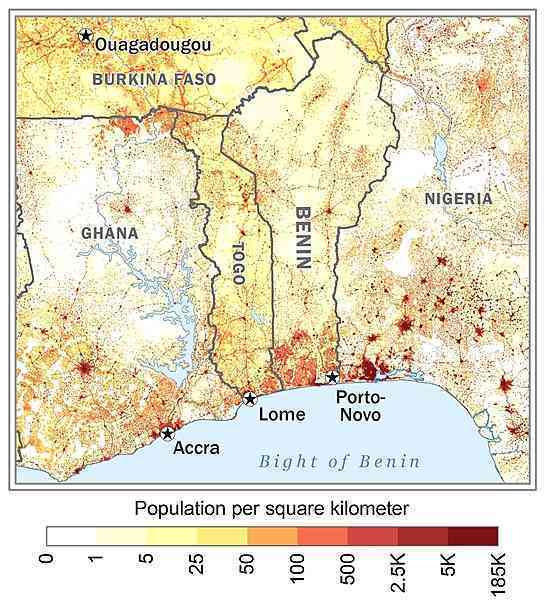
Western Africa, bordering the Bight of Benin, between Nigeria and Togo
9 30 N, 2 15 E
Africa
total: 112,622 sq km
land: 110,622 sq km
water: 2,000 sq km
slightly smaller than Pennsylvania
total: 2,123 km
border countries (4): Burkina Faso 386 km; Niger 277 km; Nigeria 809 km; Togo 651 km
121 km
territorial sea: 200 nm; note: the US does not recognize this claim
continental shelf: 200 nm
exclusive fishing zone: 200 nm
tropical; hot, humid in south; semiarid in north
mostly flat to undulating plain; some hills and low mountains
highest point: unnamed elevation 675 m; located 2.5 km southeast of the town of Kotopounga
lowest point: Atlantic Ocean 0 m
mean elevation: 273 m
small offshore oil deposits, limestone, marble, timber
agricultural land: 31.3% (2018 est.)
arable land: 22.9% (2018 est.)
permanent crops: 3.5% (2018 est.)
permanent pasture: 4.9% (2018 est.)
forest: 40% (2018 est.)
other: 28.7% (2018 est.)
172 sq km (2017)
Atlantic Ocean drainage: Niger (2,261,741 sq km), Volta (410,991 sq km)
the population is primarily located in the south, with the highest concentration of people residing in and around the cities on the Atlantic coast; most of the north remains sparsely populated with higher concentrations of residents in the west as shown in this 
hot, dry, dusty harmattan wind may affect north from December to March
sandbanks create difficult access to a coast with no natural harbors, river mouths, or islands
NOTE: The information regarding Benin on this page is re-published from the 2024 World Fact Book of the United States Central Intelligence Agency and other sources. No claims are made regarding the accuracy of Benin 2024 information contained here. All suggestions for corrections of any errors about Benin 2024 should be addressed to the CIA or the source cited on each page.
This page was last modified 04 May 24, Copyright © 2024 ITA all rights reserved.